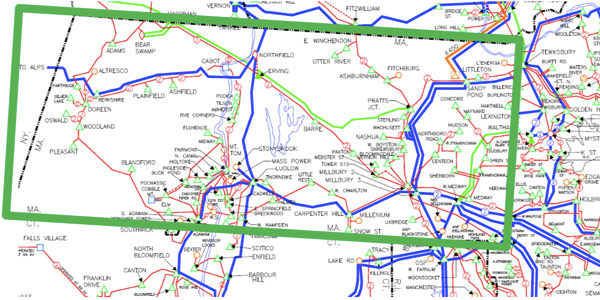Real-time price data from 2018 indicate the ISO-NE grid is nearly free of congestion, stakeholders learned during a Planning Advisory Committee teleconference last week.
ISO-NE System Planning Engineer Victoria Rojo presented the PAC with an analysis of historical market and operational data, saying “the small congestion component of the locational marginal prices suggests there is little congestion on these interfaces.”
The analysis showed that interface flows typically operate closer to the limit during on-peak hours and that portions of the system far from load centers — especially northern Maine — have high negative loss components. Rojo attributed the Maine negative line losses to new wind energy resources.
“We are effectively close to a congestion-free system,” said Michael Henderson, the RTO’s director of regional planning and coordination.
West Central Mass 2027 Tx Needs Assessment
ISO-NE will conduct a 2027 needs assessment for the Western and Central Massachusetts (WCMA) study area to examine any potential transmission needs 10 years out and determine their time sensitivity.
The study will consider future load distribution; resource changes in the area based on Forward Capacity Auction 11 results; 2017 solar and energy-efficiency forecasts; reliability over a range of generation patterns and transfer levels; and all applicable NERC, Northeast Power Coordinating Council and ISO-NE transmission planning reliability standards.
Comments on the preliminary draft study are due by Feb. 4 and the study should be complete in the second quarter.
Critical Load Level and Need-by Date Determination
Senior transmission planning engineer Pradip Vijayan presented staff analysis to determine the critical load level (CLL) and a need-by date (NBD) for steady-state, peak-load needs on short circuits.
The study noted that in past needs assessments, a “year of need” was used to denote summer peak load needs likely to be required within three years. However, for time-sensitive needs, the Tariff requires a specific NBD.
The RTO performs a CLL analysis for each identified need, and the results inform market participants about the quantity and general location of resources that would either satisfy the need or defer it for regulated transmission solutions.
For a time-sensitive need, the calculated CLL signals at what load level an identified need would be eliminated — which may call for additional reduction in New England load.
— Michael Kuser





